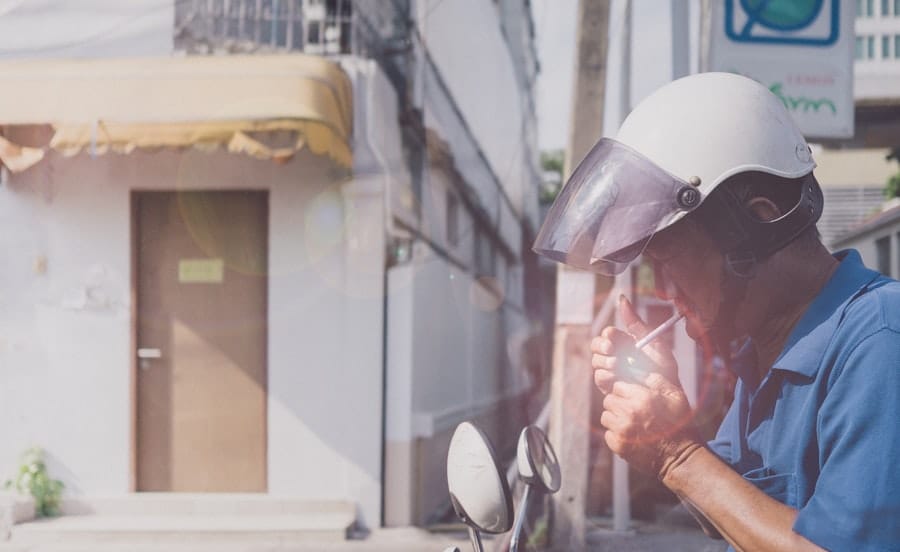The Lux Survey and Illumination Study is a critical process for assessing lighting conditions in pharmaceutical facilities. This study measures illuminance levels, which represent the amount of light reaching a surface. Its primary objectives are to ensure that facility lighting meets required standards for worker safety and productivity, as well as product quality.
Additionally, the study helps identify areas where lighting improvements are necessary. Qualified professionals typically conduct the Lux Survey and Illumination Study using specialized equipment to measure illuminance levels at various points within the facility. The collected data is then analyzed to determine if the lighting meets recommended standards set by regulatory bodies such as the Occupational Safety and Health Administration (OSHA) and other relevant industry standards.
This study plays a vital role in maintaining a safe and productive work environment within pharmaceutical facilities. It helps ensure compliance with regulations, optimizes working conditions, and contributes to the overall quality of pharmaceutical manufacturing processes.
Key Takeaways
- Lux survey and illumination study are essential for evaluating the lighting conditions in pharmaceutical facilities to ensure compliance with safety and regulatory standards.
- Illumination study is crucial for pharmaceutical facilities as it directly impacts the quality of production, employee productivity, and overall safety within the facility.
- Elion’s project in Telangana, Hyderabad, highlights the importance of conducting illumination studies to ensure optimal lighting conditions in pharmaceutical facilities.
- Conducting an illumination audit involves assessing the current lighting system, identifying areas of improvement, and developing recommendations for enhanced illumination.
- Key findings from the illumination survey can include areas of inadequate lighting, potential safety hazards, and opportunities for energy efficiency improvements.
- Implementation of recommendations for improved illumination is essential for enhancing the overall lighting conditions in pharmaceutical facilities and ensuring compliance with regulatory standards.
- In conclusion, future considerations for illumination studies in pharmaceutical facilities should focus on continuous monitoring, regular audits, and the integration of advanced lighting technologies for improved efficiency and safety.
Importance of Illumination Study for Pharmaceutical Facilities
Here is the rewritten text with 3-4 **The Importance of Illumination in Pharmaceutical Facilities**
The Illumination Study holds significant importance for pharmaceutical facilities due to several reasons.
**Safety and Well-being**
Firstly, proper lighting is crucial for the safety and well-being of the workers within the facility. Inadequate lighting can lead to accidents and injuries, especially in environments where precision and attention to detail are essential, such as in pharmaceutical manufacturing.
**Product Quality and Integrity**
Additionally, poor lighting can lead to eye strain, fatigue, and decreased productivity among workers. Furthermore, the Illumination Study is vital for maintaining the quality and integrity of the pharmaceutical products being manufactured. Proper lighting is necessary for accurate visual inspections, quality control processes, and packaging operations. Inadequate lighting can lead to errors in product inspection and packaging, which can compromise the quality and safety of the pharmaceutical products.
**Regulatory Compliance**
Inadequate lighting can lead to errors in product inspection and packaging, which can compromise the quality and safety of the pharmaceutical products. Overall, the Illumination Study is crucial for ensuring compliance with regulatory standards, maintaining a safe and productive work environment, and upholding the quality and integrity of pharmaceutical products within the facility.
Elion’s Project in Telangana, Hyderabad

Elion Pharmaceuticals, a leading pharmaceutical company, recently undertook a major project in Telangana, Hyderabad, to expand its manufacturing facility. As part of this expansion project, Elion recognized the importance of conducting an Illumination Study to ensure that the lighting within the new facility meets the required standards for safety, productivity, and product quality. The project in Telangana, Hyderabad, involved the construction of state-of-the-art manufacturing facilities for producing a range of pharmaceutical products.
Elion Pharmaceuticals aimed to create a modern and efficient production environment that adheres to the highest industry standards. As part of this commitment, Elion engaged a team of lighting experts to conduct a comprehensive Illumination Study within the new facility. The Illumination Study conducted at Elion’s project in Telangana, Hyderabad, involved assessing the lighting conditions in various areas of the facility, including production areas, packaging zones, storage areas, and office spaces.
The study aimed to ensure that the lighting levels were adequate for the tasks being performed in each area and that they met the required standards for worker safety and product quality. The findings from this study played a crucial role in guiding the design and implementation of lighting solutions within the new facility.
Conducting an Illumination Audit
Conducting an Illumination Audit involves a systematic assessment of the lighting conditions within a pharmaceutical facility. This process typically begins with a thorough inspection of all areas within the facility where lighting is essential, including production areas, laboratories, storage spaces, and office areas. During the audit, specialized equipment is used to measure illuminance levels at various points within each area to determine if they meet the required standards.
The Illumination Audit also involves a review of existing lighting fixtures, their placement, and their condition. This assessment helps in identifying any outdated or malfunctioning fixtures that may be contributing to inadequate lighting levels within the facility. Additionally, factors such as natural light sources, glare, and shadowing are also considered during the audit to ensure that they do not negatively impact the overall lighting conditions.
Once the data is collected from the Illumination Audit, it is analyzed to identify areas where improvements are needed to enhance the lighting conditions within the facility. This analysis forms the basis for developing recommendations for implementing changes to improve illumination levels and ensure compliance with regulatory standards.
Key Findings from the Illumination Survey
The key findings from the Illumination Survey conducted at Elion’s project in Telangana, Hyderabad revealed several important insights regarding the lighting conditions within the new facility. The survey identified areas where illuminance levels were below the recommended standards, particularly in certain production areas and storage spaces. These findings highlighted potential safety hazards and productivity issues that needed to be addressed through improved lighting solutions.
Furthermore, the survey also revealed instances of glare and shadowing in certain work areas, which could impact worker comfort and visual accuracy during tasks such as product inspection and packaging. These findings underscored the need for adjustments to lighting fixtures and placement to minimize glare and shadowing effects. In addition to these findings, the survey also identified opportunities to leverage natural light sources more effectively within the facility to reduce energy consumption and enhance overall lighting quality.
These insights from the Illumination Survey played a crucial role in informing the recommendations for improving illumination within Elion’s new manufacturing facility.
Implementation of Recommendations for Improved Illumination

Upgrading Lighting Fixtures
These recommendations included upgrading existing lighting fixtures with more energy-efficient and higher-quality alternatives to ensure adequate illuminance levels in all work areas. Additionally, adjustments were made to fixture placement and orientation to minimize glare and shadowing effects.
Natural Light Harvesting Strategies
Furthermore, natural light harvesting strategies were implemented to maximize the use of daylight within the facility while minimizing energy consumption. This involved incorporating skylights, light shelves, and light tubes in strategic locations to bring natural light deeper into the building interior. These measures not only improved illumination levels but also contributed to a more sustainable and environmentally friendly lighting solution.
Implementation and Results
The implementation of these recommendations resulted in significant improvements in lighting quality within Elion’s new manufacturing facility. Workers reported enhanced visibility and comfort during tasks, while productivity levels increased due to improved lighting conditions. The implementation of these recommendations also ensured compliance with regulatory standards for worker safety and product quality.
Conclusion and Future Considerations for Illumination Studies in Pharmaceutical Facilities
In conclusion, the Lux Survey and Illumination Study play a critical role in ensuring safe, productive, and high-quality work environments within pharmaceutical facilities. The case of Elion’s project in Telangana, Hyderabad, demonstrates how conducting an Illumination Study can lead to significant improvements in lighting conditions within a new manufacturing facility. Looking ahead, it is essential for pharmaceutical companies to prioritize ongoing illumination studies as part of their commitment to maintaining safe and efficient production environments.
As technology continues to advance, there are opportunities to leverage innovative lighting solutions such as LED fixtures, smart lighting controls, and daylight harvesting systems to further enhance illumination within pharmaceutical facilities. Furthermore, ongoing research and development in lighting technology will continue to provide new opportunities for improving illumination in pharmaceutical facilities. It is crucial for pharmaceutical companies to stay informed about these advancements and consider how they can be applied to enhance lighting conditions within their facilities.
In conclusion, illumination studies are an essential aspect of ensuring safe and productive work environments within pharmaceutical facilities. By prioritizing ongoing illumination studies and implementing innovative lighting solutions, pharmaceutical companies can continue to uphold high standards for worker safety, productivity, and product quality within their facilities.
Elion’s Project in Telangana, Hyderabad included a comprehensive Lux Survey and Illumination Study for their pharmaceutical facilities, ensuring optimal lighting conditions for their operations. In addition to this, Elion also offers services such as indoor air quality testing and energy audits to further optimize operations. For example, their article on optimizing operations with thermography audit provides valuable insights into how businesses can improve their processes using advanced technology. Read more about their innovative approach to facility management.
FAQs
What is the Lux Survey and Illumination Study for Pharmaceutical Facilities?
The Lux Survey and Illumination Study for Pharmaceutical Facilities is a comprehensive assessment of the lighting conditions within a pharmaceutical facility. It involves measuring the level of illumination (lux) in different areas of the facility and studying the impact of lighting on various processes and activities.
What is Elion’s Project in Telangana, Hyderabad?
Elion’s Project in Telangana, Hyderabad is a pharmaceutical facility located in the state of Telangana, India. The project aims to establish a state-of-the-art pharmaceutical manufacturing facility that meets international standards for quality and safety.
Why is the Lux Survey and Illumination Study important for pharmaceutical facilities?
The Lux Survey and Illumination Study is important for pharmaceutical facilities because proper lighting is crucial for maintaining a safe and productive working environment. It also plays a significant role in ensuring the quality and integrity of pharmaceutical products during manufacturing, packaging, and storage processes.
What are the key objectives of the Lux Survey and Illumination Study?
The key objectives of the Lux Survey and Illumination Study for Pharmaceutical Facilities include assessing the current lighting conditions, identifying areas of improvement, ensuring compliance with regulatory standards, and optimizing energy efficiency.
How does the Lux Survey and Illumination Study benefit pharmaceutical facilities?
The Lux Survey and Illumination Study benefits pharmaceutical facilities by helping them identify and address potential lighting-related issues that could impact product quality, employee safety, and operational efficiency. It also provides valuable insights for implementing cost-effective lighting solutions and improving overall facility performance.
